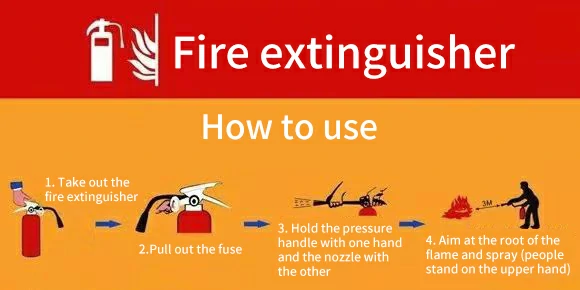The performance of surfactant foaming can be used to manufacture fire extinguishing agents. The main role of surfactants in foam extinguishing agents is to foam and extinguish the fire. Due to the cooling effect of the water contained in the foam, as well as the foam layer, micelle film or gel layer covered on the surface of the fire, so that the fire and oxygen isolation, and play a role in fire extinguishing. It is generally a high carbon fatty acid or high carbon alcohol anionic, nonionic and amphoteric active agent with high foaming power. Combustion is a redox reaction of light, heat, flame and smoke, and the material must meet three necessary conditions for combustion, namely, combustible material, accelerant and ignition source. Modern science has found that for some complex combustion, there is also a 4th condition – chain reaction. Once these conditions are destroyed, combustion will stop, which is the basic starting point for fire extinguishing agents. The next Jiangsu Dayao Chemical Technology Department for this one by one: the type of foam fire extinguishing agent is different, the surfactant used is also different. Translated with www.DeepL.com/Translator (free version)
Fluorine protein foam extinguishing agent is based on common protein foam extinguishing agent, adding fluorocarbon surfactant, hydrocarbon surfactant, etc., so that its performance can be improved. Compared with common protein foam, the fluidity, oleophobicity, flame-resistance and compatibility of fluoroprotein foam are better than common protein foam, and the fire extinguishing performance is significantly improved, and the price is similar to that of common protein foam. Translated with www.DeepL.com/Translator (free version)
Aqueous film-forming foam extinguishing agent is made of fluorocarbon surfactant, hydrocarbon surfactant, foam stabilizer, antifreeze agent, etc. It is also called light water foam extinguishing agent, with good foam fluidity, fast extinguishing speed and high efficiency.
Soluble foam extinguishing agent in the fluoroprotein type, silicone surface active agent type used fluorocarbon surfactant, silicone surfactant generated foam can resist the dissolution of water-soluble A, B, C liquid damage to it.

The gel type anti-soluble foam extinguishing agent has hydrocarbon surfactant and fluorocarbon surfactant added inside, and the foam formed is insoluble in water and solvent on the surface of hydrophilic solvent, so the foam stability is good.
High-expansion foam fire extinguishing agent is a foam fire-extinguishing agent based on synthetic surfactant. Its main components are fatty alcohol sodium sulfate, dodecanol plus antifreeze, stabilizer and other additives. The foaming multiple can be as high as more than a thousand times. .
Fire extinguishing agent in the surfactant in addition to the role of foaming, part also has the role of stabilizing foam. The good foaming performance is called foaming agent, foaming agent can only have good foaming ability under the conditions of stirring and blowing. If the foaming performance is good and foam stability is not good, the resulting foam will not last.
For example, soap and sodium alkylbenzene sulfonate have good foaming properties, but the stability of sodium alkylbenzene sulfonate after foaming is poor. In order to make the generated foam lasting and stable, foam stabilizers must be added to the process. Surfactants that can be used as foam stabilizers include long-chain cationic alkyl ammonium chloride, non-ionic surfactants, fatty acid condensates, alkyl aryl sulfonates, etc. Translated with www.DeepL.com/Translator (free version)
In addition, low expansion foam extinguishing agents also need to add surfactants to reduce surface tension to stabilize the foam. This type of surfactant is currently used exclusively protein hydrolysis cross-linked derivatives of water absorbent. Protein decomposition material in the form of spherical microgel dispersed in aqueous solution, the surface hydrophilic groups exposed in water, when generating foam, this hydrophilic microgel in the surface adsorption to some extent, to achieve stabilization in the foam, and because of cross-linking hardening, to maintain the original shape of the bubble, to achieve the role of isolation; furthermore, the absorbent with water absorption and humidification, water loss in the fire consumes a lot of heat, increasing the role of fire suppression.
*Disclaimer: The content contained in this article comes from the Internet, WeChat public numbers and other public channels, and we maintain a neutral attitude toward the views expressed in the article. This article is for reference and exchange only. The copyright of the reproduced manuscript belongs to the original author and the institution, and if there is any infringementPlease contact Jetson Chemical for deletion
